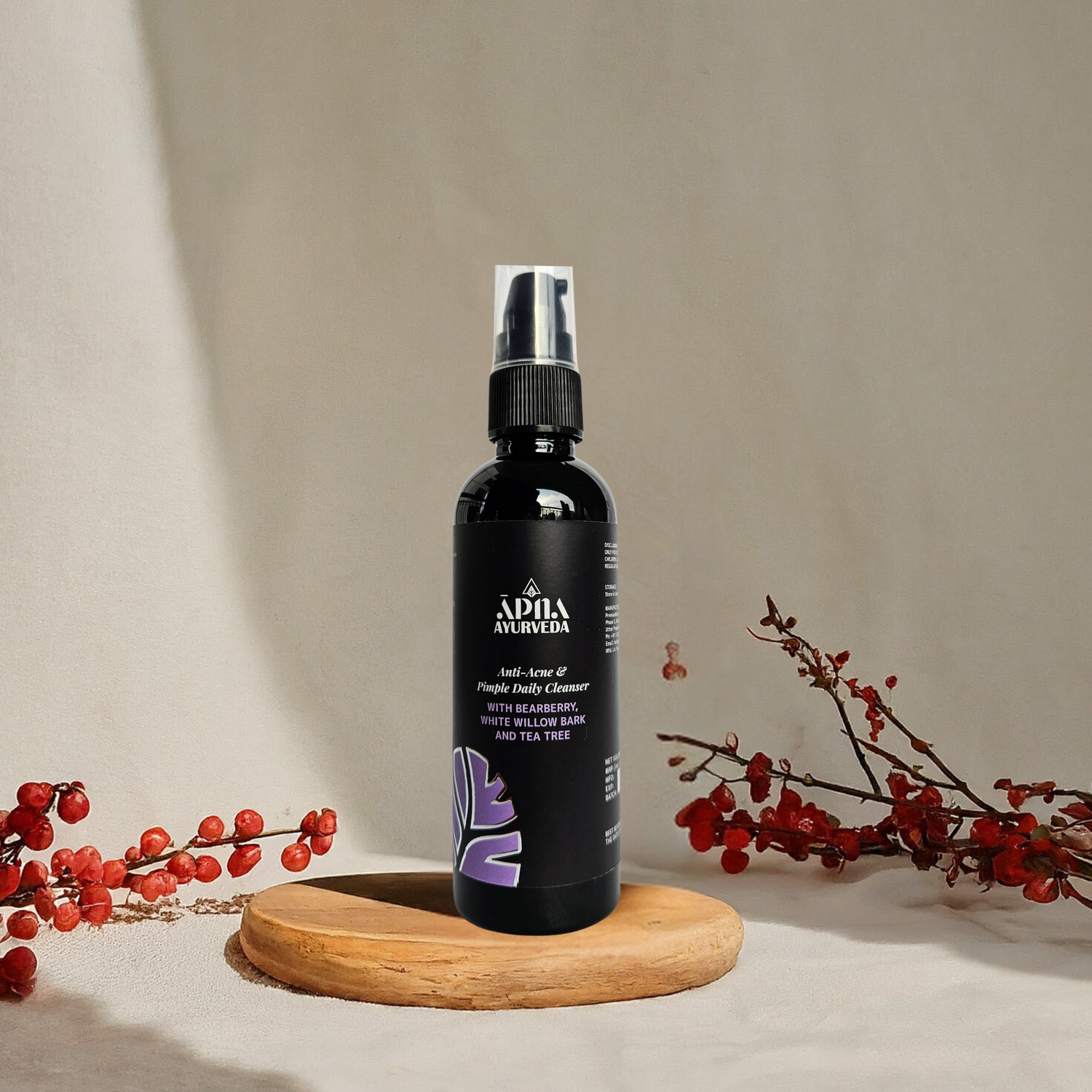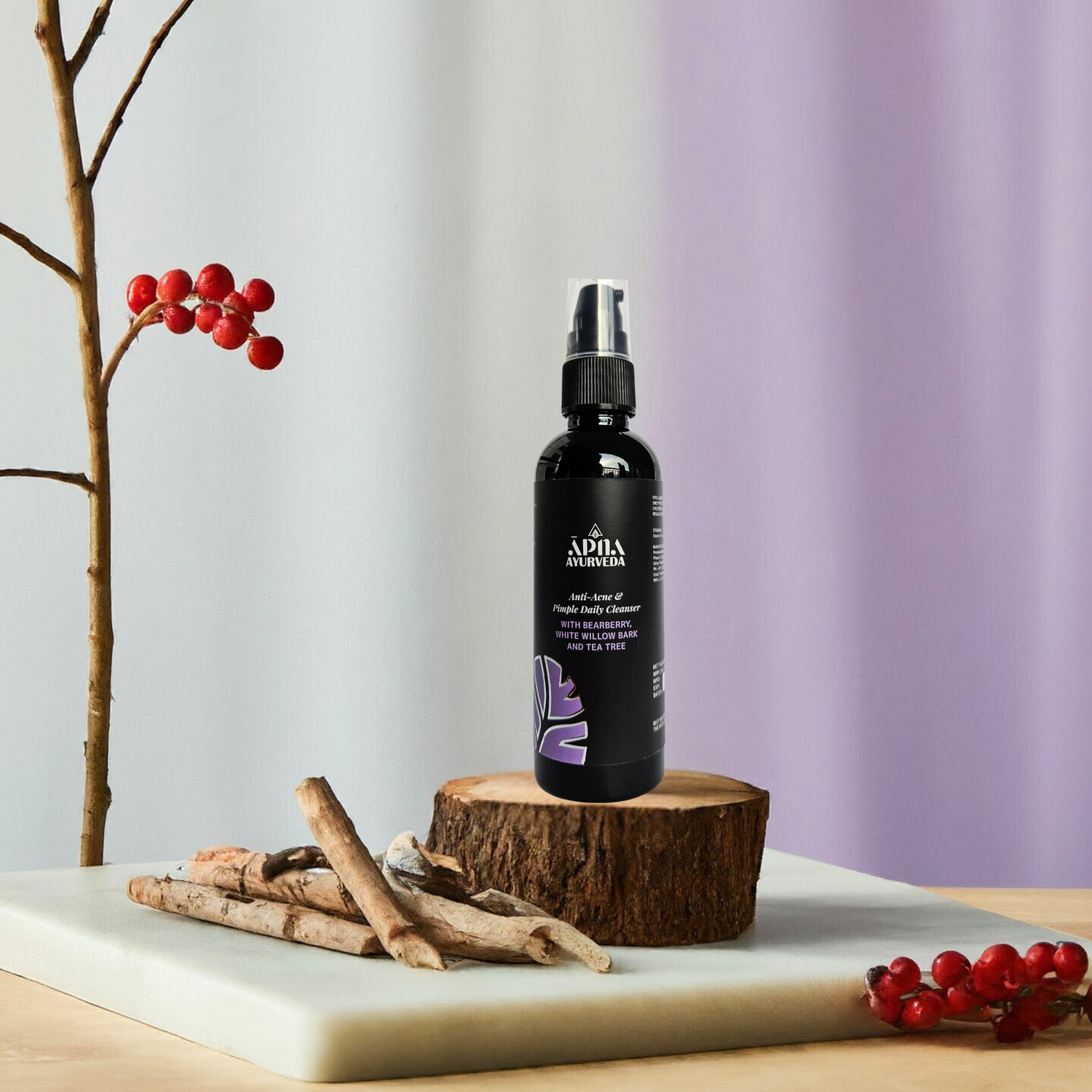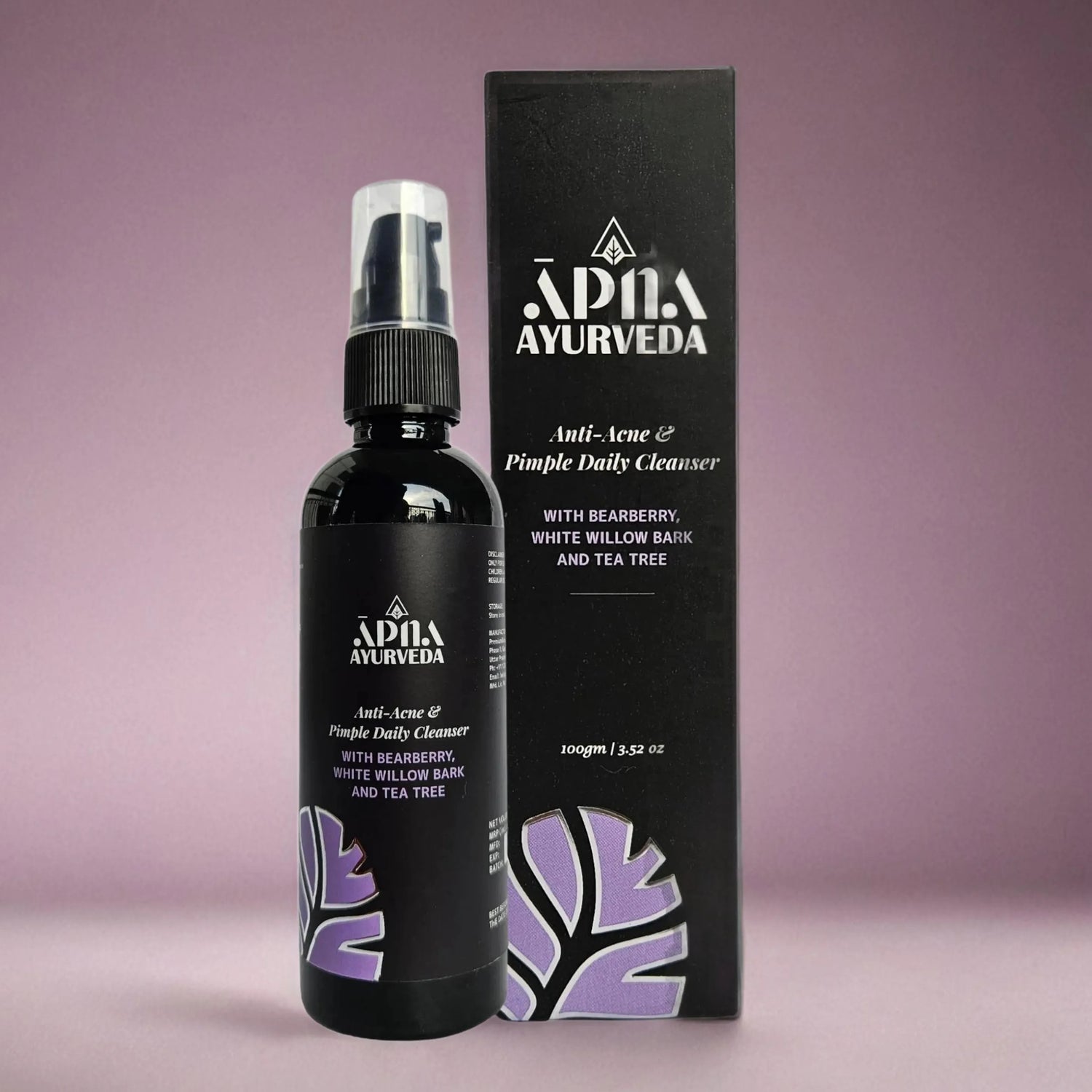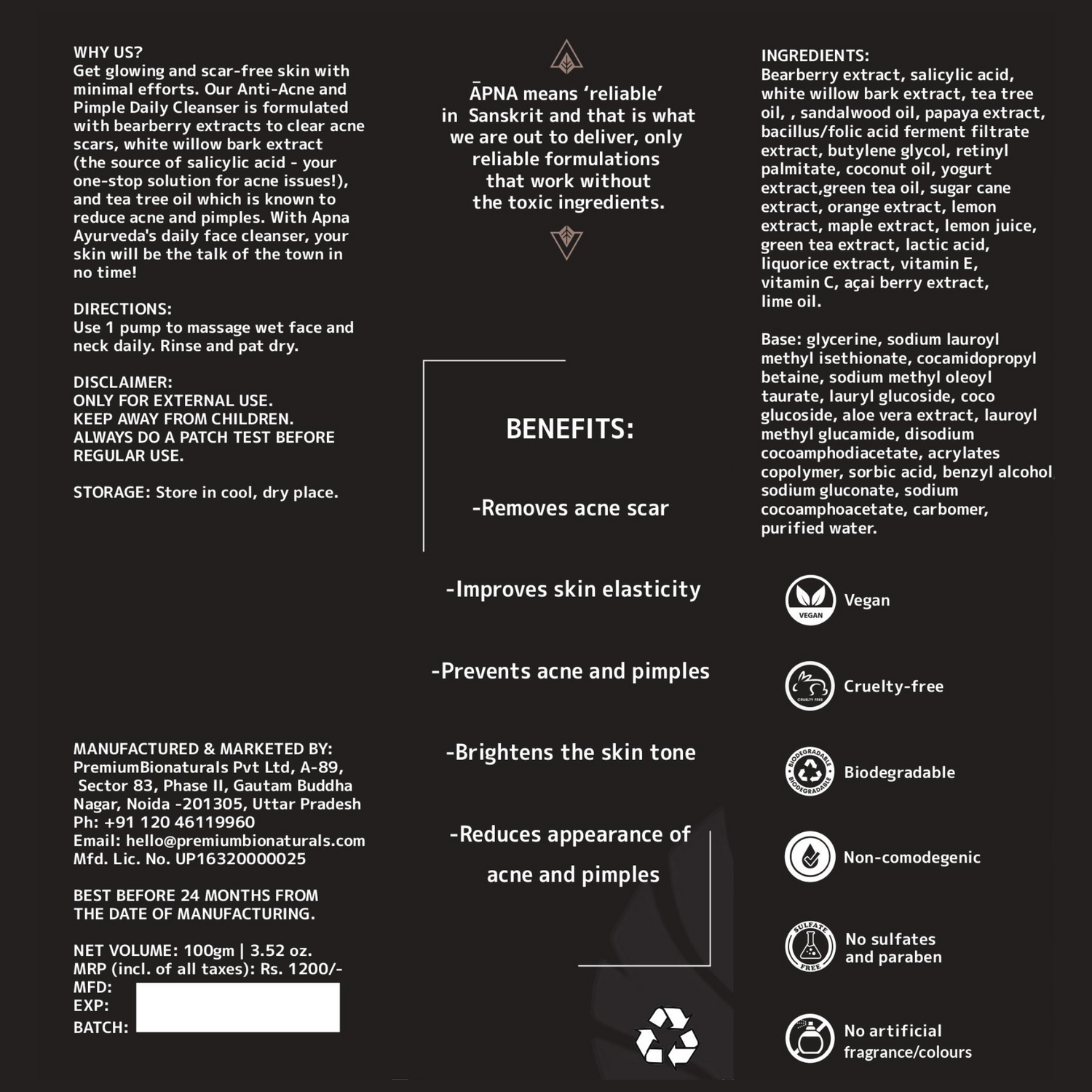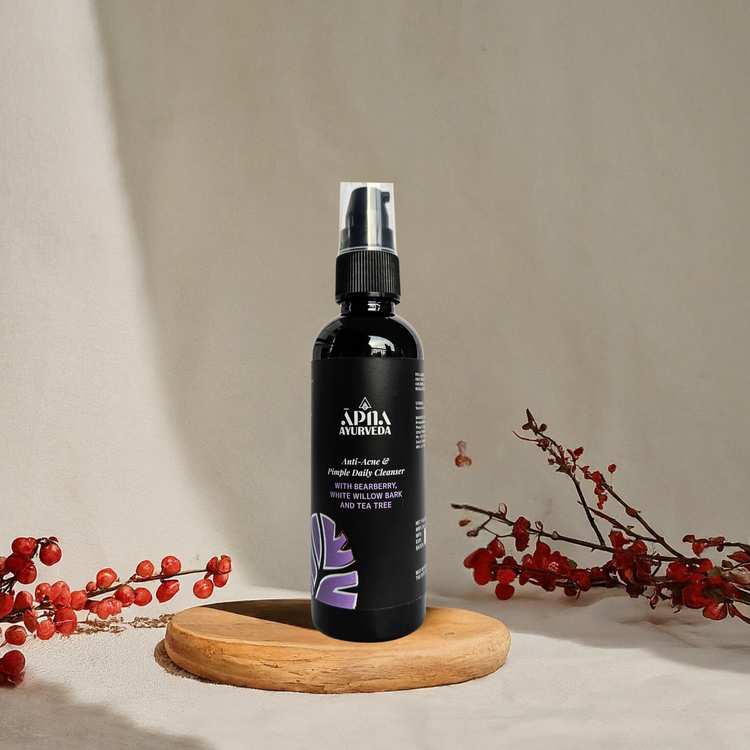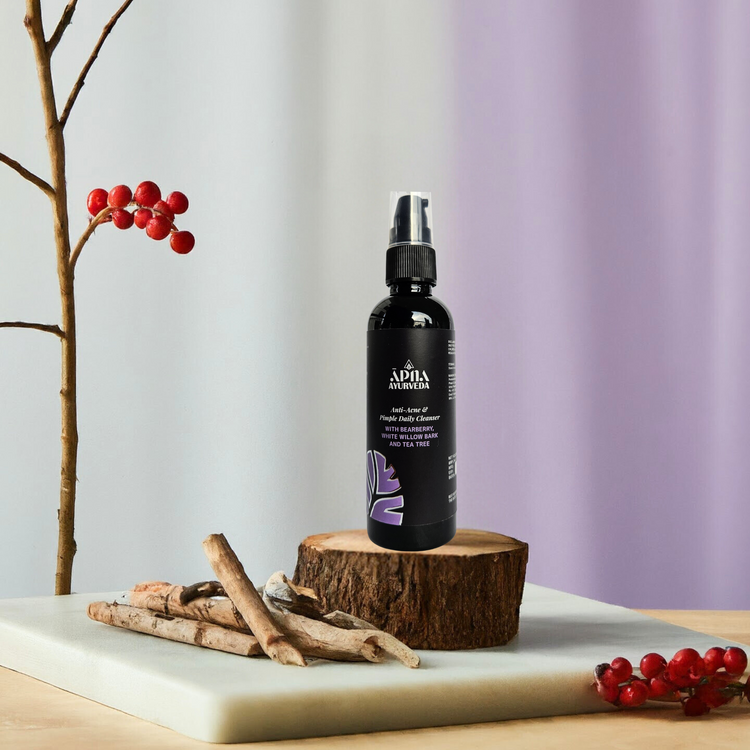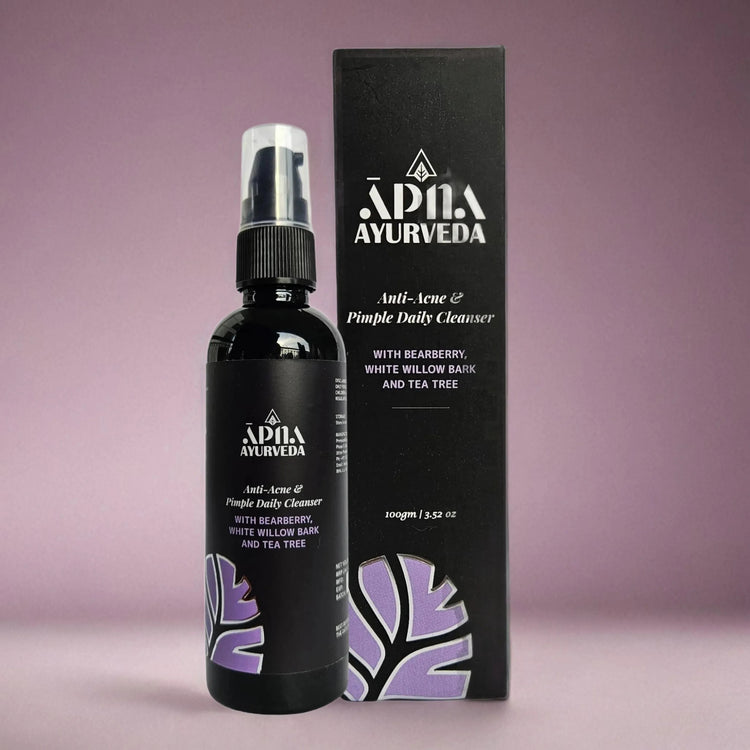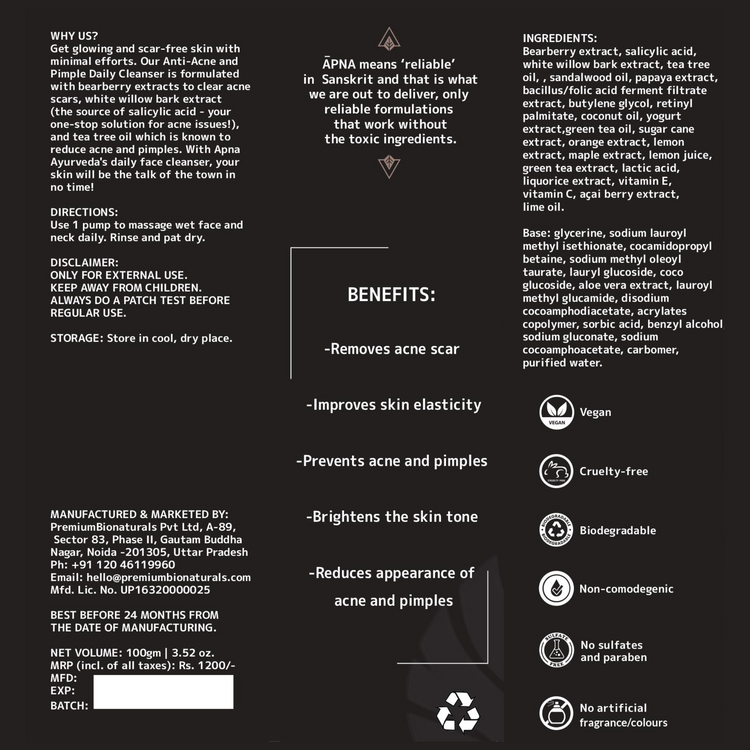Dealing with a forehead pimple can be incredibly frustrating, persistent forehead acne is even worse—especially when little bumps all over the forehead appear overnight. Whether it's a sudden breakout or an ongoing issue, you want to find a quick and gentle solution. In this blog post, we will look at the most common causes of eruptions, review effective treatments, and provide simple suggestions for keeping your skin clear and healthy. Let us destroy forehead acne together and restore your confidence!
Why Did My Forehead Break Out All of a Sudden?
Wondering why my forehead broke out all of a sudden. There are several possible reasons:

-
Stress: A hectic lifestyle can upset your circadian rhythm. It results in disrupting your skin's oil glands and creating zits.
-
Makeup: If you are sleeping with your makeup on, that might be the reason for waking up with acne the next day or the day after. Makeup clogs pores (despite the non-comedogenic claims) and therefore, must be taken off religiously before bed.
-
Dandruff And Oily Scalp: Dandruff is a very common reason behind forehead acne. Even though it is a scalp condition, dandruff and grease from the scalp travel to the back, hairline, and forehead, causing acne in those areas.
If you're dealing with these breakouts frequently, like little bumps all over forehead or recurring zits, it might also be a sign of deeper issues, like hormone imbalances or digestive problems. Breaking out on your forehead might indicate digestive imbalances or poor hygiene habits as well.
How to Get Rid of Pimples and Marks on the Face
If you're dealing with forehead acne and wondering how to get rid of pimples and marks on the face. These methods can be especially helpful if you're wondering how to get rid of pimples and marks on face without triggering more breakouts :
-
Cleanse Gently: To effectively clean your skin, use a soothing face wash twice a day— like our Anti-Acne Pimple Daily Cleanser, enriched with bearberry, white willow bark, and tea tree to gently clear clogged pores without over-drying. However, do not over-wash your face; this might dry up your skin and stimulate sebum production.
-
Avoid touching your face: Contact with your face may be tempting, but it will just worsen the eruption condition by causing infection, scars, inflammation, and discomfort. So keep your hands as far from your face as possible.
-
Scalp Wash: Wash your hair every day if your scalp is sweating, especially if you work out every day. If you use sulfate-free shampoos, product buildup is likely to be a common issue. Once in a while, you need to use a shampoo with sulfates to clean your hair effectively.
Avoid using harsh scrubs, as they can irritate the skin and make the acne worse.
Home Treatment for Pimples on Forehead
When looking for a home treatment for pimples on the forehead, your kitchen has many useful and anti-inflammatory ingredients that can help in pimple treatment and reduce breakouts — and for even better results, try supporting your routine with our Anti-Acne Pimple Daily Cream made with neem, tea tree, and white willow bark.

If you’re looking for how to get rid of little zits on forehead, these gentle natural remedies can offer relief. However, while they may be beneficial, these remedies generally work best for milder cases and are often slower in delivering results compared to clinical treatments.
-
Turmeric Paste: Turmeric has antibacterial and brightening properties. Mix turmeric with honey or yoghurt and apply it to blemishes.

-
Aloe Vera: Aloe vera has soothing and anti-inflammatory properties. Applying fresh aloe vera gel to affected areas daily can help reduce redness and, over time, the appearance of the scars.
-
Honey & Cinnamon Mask: This combination fights acne-causing bacteria and reduces inflammation. Apply a mixture of honey and cinnamon for 15 minutes and rinse it with water.
Incorporating these remedies into your skincare routine can help manage pimples without causing additional irritation or dryness.
How to Prevent Breakouts on Chin and Forehead
To get rid of little zits on the forehead, avoid oily hair products and use non-comedogenic skincare and if you’re thinking about how to prevent breakouts on your chin and forehead, it all comes down to good hygiene and healthy habits:
-
Hands Off Your Face: Refrain from touching your face, as hands can pick up bacteria throughout the day. Refrain from touching your face to reduce the risk of bacteria transfer and pore blockage.
-
Clean Pillowcases Regularly: Changing your pillow covers regularly is one of the easiest forehead pimple remedies.
Using the same pillowcase for an extended period might spread bacteria and cause forehead pimples. -
Dietary needs: Eating a balanced diet, which is low in sugar and dairy products, may help prevent acne flare-ups. To promote skin health, include foods rich in omega-3 fatty acids, antioxidants, and vitamins.
Whether you're trying to avoid forehead acne or figuring out how to prevent breakouts on chin, these daily habits make a big difference. By keeping these habits in check, you can prevent future breakouts and keep your skin clear. Prevent breakouts on the chin and forehead by keeping your hands off your face and regularly cleaning your pillowcases —these two steps are often overlooked but make a visible difference.
Face Acne Treatment: Benzoyl Peroxide vs. Salicylic Acid
For a more targeted face acne treatment, ingredients like salicylic acid and benzoyl peroxide can be very effective. Here’s how :

-
Salicylic Acid: Salicylic Acid is a favourite among dermatologists when it comes to treating acne. To learn more about its powerful benefits, check out our blog on the Top 6 Salicylic Acid Benefits for Skin. While it does not help kill acne-causing bacteria, it helps unclog the pores and remove excess oil from the skin. If you are starting out with salicylic acid, use a 1% concentration, but if you have been using salicylic acid, then a 2% concentration, which is the maximum strength, will help. Therefore, be mindful of using it as a spot treatment on only the acne-prone area and following up with an oil-free moisturiser.
-
Benzoyl Peroxide: Benzoyl Peroxide is a common ingredient prescribed by dermatologists for treating acne. It is antibacterial and therefore gets the job done. However, your skin type will determine the appropriate concentration you should use. Consult your derm about the concentration you should be using. But most wash-off and leave-on forms come in 2.5%, 5% and 10% concentration.
These are some of the most trusted ingredients in face acne treatment, offering quick results when used correctly. Both are powerful treatments, but be careful—using too much or applying them too frequently can irritate the skin. Start with a lower concentration and gradually increase as needed.
Still confused about what’s true and what’s not when it comes to acne? Don’t miss our expert-backed guide on the Top 10 Acne Myths Busted for You — it's packed with facts every skincare lover should know.
Frequently Asked Questions
Q1) What does breaking out on your forehead mean?
Breaking out on your forehead could indicate clogged pores, stress, poor diet, or hormonal fluctuations. It may also suggest digestive imbalances.
Q2) How can I get rid of little bumps all over my forehead naturally?
Natural remedies like aloe vera, tea tree oil, and honey can be effective. Be sure to cleanse and moisturise regularly to prevent future breakouts.
Q3) Is it safe to pop a forehead pimple to treat it fast?
It’s best not to pop pimples as it can introduce bacteria, cause scarring, or worsen the inflammation. Instead, a targeted treatment should be applied to address the pimple.
Q4) Which ingredients are best for home treatment for pimples on the forehead?
Tea tree oil, aloe vera, honey, and salicylic acid are excellent home remedies for forehead pimples. They help reduce inflammation and fight bacteria.
Q5) How do I prevent my forehead and chin from breaking out again?
Avoid touching your face, change pillowcases regularly, use non-comedogenic skincare products, and maintain a healthy diet to reduce breakouts.


